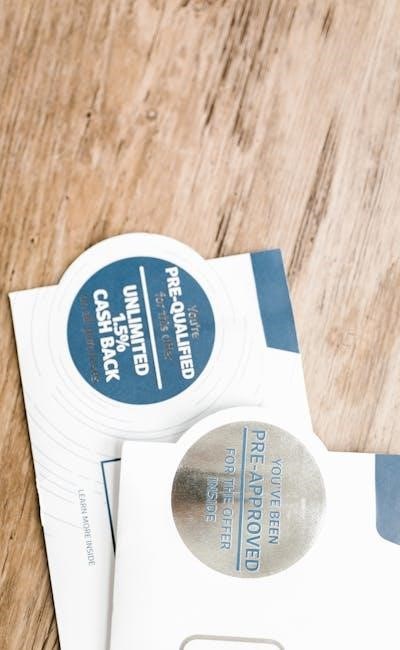Online shopping offers convenience, but introduces risks. Online fraud and identity theft are prevalent concerns. E-commerce safety requires awareness. Phishing scams attempt to steal credentials. Malware protection is crucial, as is understanding credit card security.
Online transactions are vulnerable to interception without proper safeguards. Secure websites are paramount, but even those can be targeted. Risk management involves recognizing threats like keyloggers and man-in-the-middle attacks.
Data encryption protects information in transit, but doesn’t eliminate all risk. PCI compliance standards aim to secure cardholder data, but breaches still occur. Be mindful of secure checkout processes and always prioritize safe browsing habits.
Verifying Website Security & Legitimacy
Before entering any payment information, rigorously verify the website’s legitimacy. Look for the HTTPS in the URL – the ‘S’ signifies a secure website utilizing data encryption. A padlock icon in the browser’s address bar further confirms this. However, these aren’t foolproof; scammers can sometimes mimic these indicators.
Always check for a valid SSL certificate. Most browsers allow you to click on the padlock to view certificate details, confirming the website’s identity and encryption strength. Be wary of certificates that are expired, self-signed, or issued to a different entity than the website’s domain name.
Research the seller; Are they trusted sellers with a clear physical address and contact information? Check for online reviews and ratings on independent platforms – don’t rely solely on testimonials displayed on the website itself. A lack of information or overwhelmingly positive (and potentially fake) reviews should raise red flags.
Be cautious of unusually low prices. If a deal seems too good to be true, it probably is. Scammers often lure victims with drastically discounted items. Verify the price against other retailers and be skeptical of websites offering significantly lower prices without a clear explanation.
Examine the website’s design and content. Professional-looking websites are generally more trustworthy. Look for grammatical errors, broken links, or inconsistencies in branding, which can indicate a fraudulent site. A poorly designed website is a strong indicator of potential online fraud.
Utilize website reputation tools and browser extensions that assess website safety. These tools can provide a risk score and flag potentially malicious sites. Remember to keep your browser security settings up-to-date for optimal protection against known threats. Prioritize e-commerce safety by being a discerning shopper.
Protecting Your Credit Card Information
Safeguarding your credit card security is paramount during online shopping. Avoid using public Wi-Fi networks for online transactions, as these are often unsecured and vulnerable to interception. Always use a secure, private network or a Virtual Private Network (VPN).
Never store your credit card details on websites unless absolutely necessary. If a site offers the option, consider the risks carefully. Opt for payment gateways like PayPal or Apple Pay, which act as intermediaries and protect your card number from the merchant. These services often offer additional fraud prevention measures.
Enable two-factor authentication (2FA) wherever possible. This adds an extra layer of security by requiring a second verification method, such as a code sent to your phone, in addition to your password. 2FA significantly reduces the risk of unauthorized access, even if your password is compromised.
Consider using virtual credit card numbers (VCCs). Many credit card issuers offer this service, allowing you to generate a temporary card number for online purchases. This limits the exposure of your actual card number and can be easily cancelled if you suspect fraud.
Be vigilant about protecting your card verification value (CVV) and address. Never share this information via email or unsecured channels. Legitimate merchants will never ask for your CVV after a purchase is initiated. The address verification system (AVS) helps verify billing address, but isn’t foolproof.
Create strong passwords for all your online accounts and use a different password for each site. A strong password should be at least long and include a mix of uppercase and lowercase letters, numbers, and symbols. Regularly update your passwords and avoid using easily guessable information. Prioritize online fraud prevention.
Leveraging Technology for Enhanced Security
Utilizing available technology is crucial for bolstering e-commerce safety. Always verify a website’s security before entering any personal or financial information. Look for HTTPS in the URL – the ‘S’ indicates a secure connection using SSL certificate. A padlock icon in the browser address bar also confirms a secure connection.
Install and maintain reputable antivirus software and browser security extensions. These tools can detect and block malicious websites, phishing attempts, and malware that could compromise your credit card security. Regularly scan your devices for vulnerabilities and update your software to the latest versions.
Explore the benefits of digital wallets like Apple Pay, Google Pay, and Samsung Pay. These services tokenize your credit card information, replacing your actual card number with a unique digital identifier. This adds an extra layer of security and reduces the risk of online fraud.
Enable fraud alerts with your credit card issuer. These alerts notify you of any suspicious activity on your account, allowing you to quickly identify and report unauthorized charges. Monitor your account statements regularly for any discrepancies.
When using mobile payment security features, ensure your device is protected with a strong passcode or biometric authentication. Avoid saving your credit card details directly on your mobile device. Utilize the security features offered by your mobile operating system.
Understand the importance of data encryption. Secure websites encrypt your information during transmission, making it unreadable to unauthorized parties. However, encryption alone isn’t sufficient; it must be combined with other security measures. Prioritize sites demonstrating robust PCI compliance.
Staying Vigilant & Reporting Suspicious Activity
Maintaining constant vigilance is paramount in preventing online fraud. Be wary of unsolicited emails or messages requesting personal or financial information – these are often phishing scams. Never click on links or download attachments from unknown senders. Always navigate directly to a website by typing the address into your browser.
Exercise caution when using public Wi-Fi networks. These networks are often unsecured and can be easily intercepted by hackers. Avoid conducting sensitive online transactions, such as online shopping, on public Wi-Fi. If you must use public Wi-Fi, use a Virtual Private Network (VPN) to encrypt your internet traffic.
Be skeptical of deals that seem too good to be true. Fraudulent websites often lure victims with incredibly low prices or exclusive offers. Research the seller and read reviews before making a purchase. Stick to trusted sellers with established reputations.
If a website asks for your card verification value (CVV) after a purchase is complete, be extremely cautious. Legitimate merchants should not request this information after the transaction has been processed. This is a common tactic used by fraudsters.
Familiarize yourself with the address verification system (AVS) and how it works. AVS helps verify that the billing address provided matches the address on file with your credit card issuer. Ensure your billing address is always up-to-date.
If you suspect you’ve been a victim of identity theft or online fraud, report it immediately to your credit card issuer, the Federal Trade Commission (FTC), and your local law enforcement agency. Prompt reporting can help minimize the damage and prevent further fraudulent activity. Don’t hesitate to freeze your credit report.
Regularly review your online shopping habits and be proactive in protecting your financial information. Staying informed about the latest threats and security measures is essential for maintaining credit card security and enjoying a safe e-commerce safety experience.




This is a really solid, practical guide to online shopping safety. I especially appreciate the emphasis on *verifying* security indicators – the HTTPS and padlock are good starting points, but digging deeper into the SSL certificate details is a step many people miss. The warning about overly good deals is spot on, and the advice to check independent reviews is crucial. It